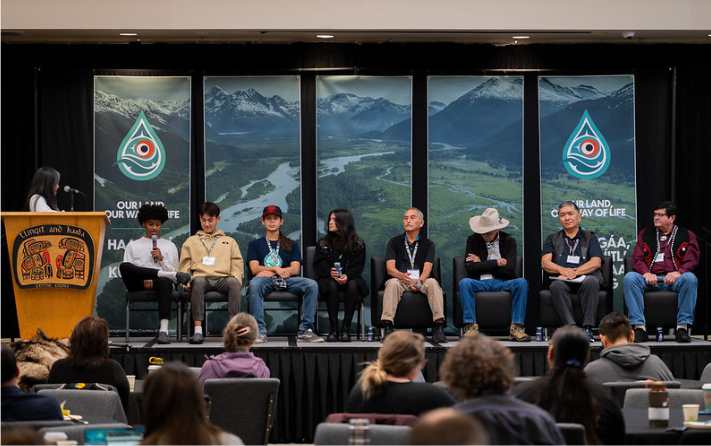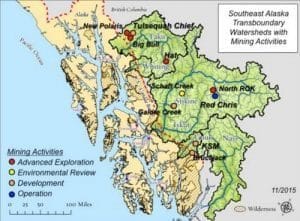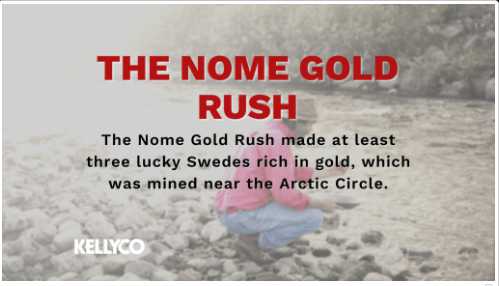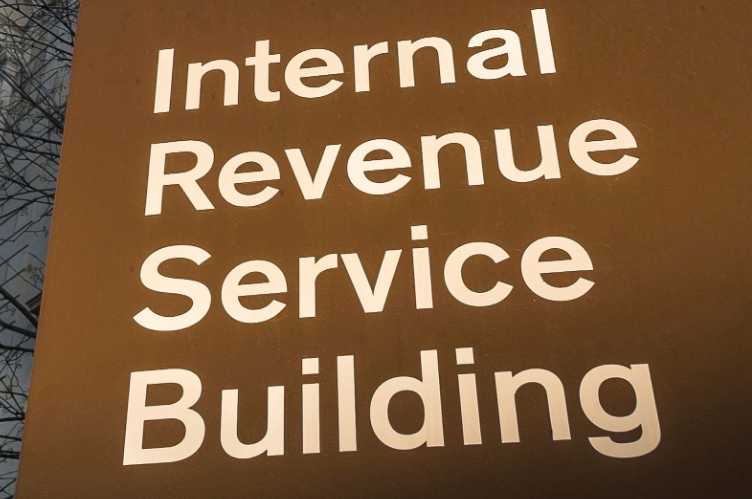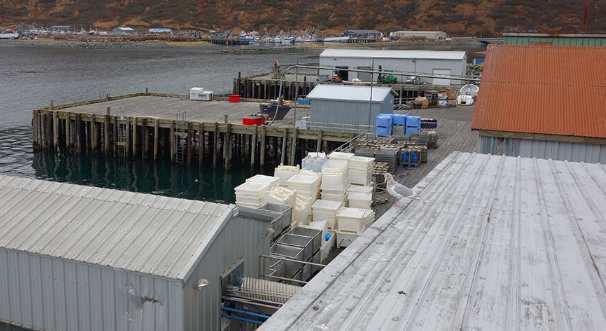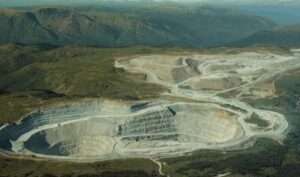 Washington D.C. – A vital ecological area shared by British Columbia (B.C.) and Southeast Alaska faces escalating pressure from Canadian gold mining exploration companies propelled by the obscure, Ponzi scheme-like “Prospect Generator Model (PGM).” The latest investigation titled Bad Prospects, by the Environmental Investigation Agency (EIA) uncovers a web-like network of more than 450 Canadian companies currently linked through the PGM, focused on claims staking and mining exploration across a transboundary watershed region known to the mining industry as the “Golden Triangle.” These “prospect generators” are mining not gold as much as “mining” retail investors and uniquely Canadian tax benefits.
Washington D.C. – A vital ecological area shared by British Columbia (B.C.) and Southeast Alaska faces escalating pressure from Canadian gold mining exploration companies propelled by the obscure, Ponzi scheme-like “Prospect Generator Model (PGM).” The latest investigation titled Bad Prospects, by the Environmental Investigation Agency (EIA) uncovers a web-like network of more than 450 Canadian companies currently linked through the PGM, focused on claims staking and mining exploration across a transboundary watershed region known to the mining industry as the “Golden Triangle.” These “prospect generators” are mining not gold as much as “mining” retail investors and uniquely Canadian tax benefits.
The EIA estimates that 20% of all B.C. mining claims in the province are located in this transboundary watershed region. Over 80% of these B.C. claims are within five kilometers of a river or stream, about 18% of claims are on top of glaciers, and over 100 B.C. mining projects are in some phase of exploration, proposal or operation in this region. These mining companies rely on a continuous stream of funds from smaller investors to pay handsome executive salaries, dig hundreds of kilometers of holes, build infrastructure such as roads, bridges, and camps along fragile ecosystems like retreating glaciers and wild salmon habitat, and establish joint ventures and option agreements with other companies. Mining-friendly laws like the colonial B.C. Mineral Tenure Act and incentivizing tax policies in Canada and B.C., like Flow-through Shares and the Mineral Exploration Tax Credit, have yielded C$500 million in forgone taxes annually and make this salmon-rich region a particularly attractive place for mining executives and major investors to deploy this financial approach as part of a new speculative gold rush.
The hope of retail investors is that one of these prospects will one day become a highly profitable mine, meaning large financial returns. However, according to the Association for Mineral Exploration, only one in 10,000 claims becomes an operational mine, which means average investors, Canadian taxpayers, Indigenous peoples, rural residents, and U.S. communities and economies downstream are left shouldering the financial and environmental risks and costs of the Prospect Generator Model and B.C. gold mine exploration. Meanwhile, a small cohort of distant mine owners and major investors get rich while carrying almost no risk. Such imbalance distorts the risk-to-reward ratio and raises questions about the long-term financial sustainability for investors and the social responsibility of mining enterprises. For ten years, Alaska Tribes, municipalities, commercial fishermen, lawmakers, and tens of thousands of U.S. and Canadian citizens have expressed concern about Canada’s industrialization and pollution of shared wild salmon rivers. Two large-scale B.C. mines with tailings dams currently operate and one abandoned B.C. mine has been polluting for over 65 years in the region. Alaska Senator Lisa Murkowski recently wrote to President Biden urging the U.S. to not support any mine in Canada until the calls of Alaska Tribes and communities for international watershed protections are addressed.
“The prospect generator model in the transboundary region serves to move risk that should be private onto the public, and public taxpayer funds into private hands,” said CT Harry, EIA Senior Ocean Policy Analyst.
Given the myriad adverse social and environmental impacts perpetuated by the PGM and the lack of benefits to all but a few, Canada’s incentivization of new gold exploration projects with big tax breaks for mine proponents in the Alaska-B.C. transboundary region signals a lack of international collaboration and action on major climate and environmental issues.
There is growing consensus that global gold stocks are more than adequate, with over 90% of newly mined gold used for jewelry or bullion, not renewable energy production. Moreover, irreversible impacts to Indigenous communities and this biodiversity hotspot are increasing and researchers predict thousands of kilometers of new wild salmon habitat will emerge here this century as glaciers melt — if they are not first dug up for mine exploration and development. In light of these challenges, it is imperative to revise or terminate British Columbia and Canadian policies that foster PGM-driven exploration and to enforce regulatory changes that prioritize Indigenous rights and environmental protection.
Read the full report and recommendations.
###[content id=”79272″]

